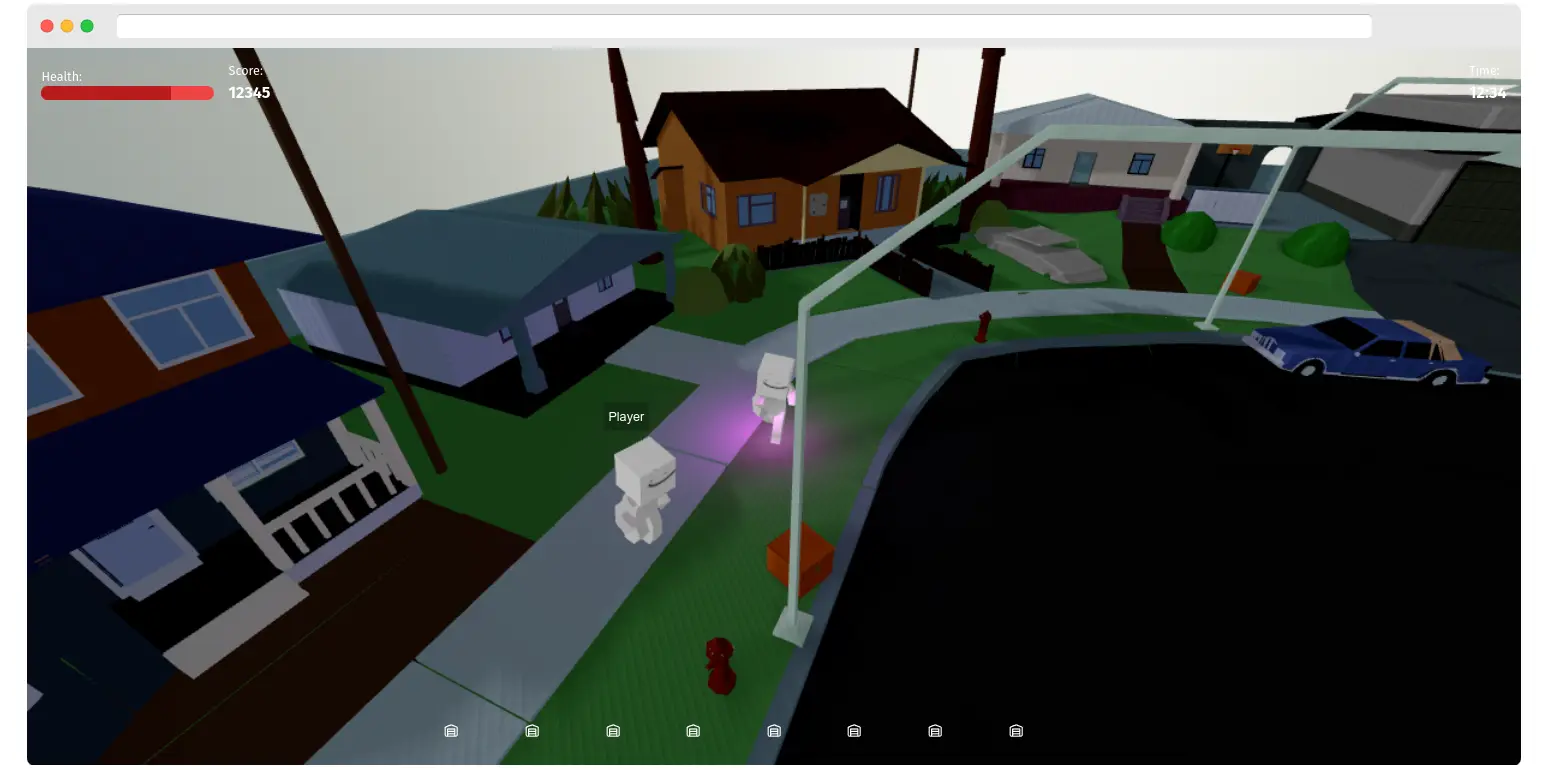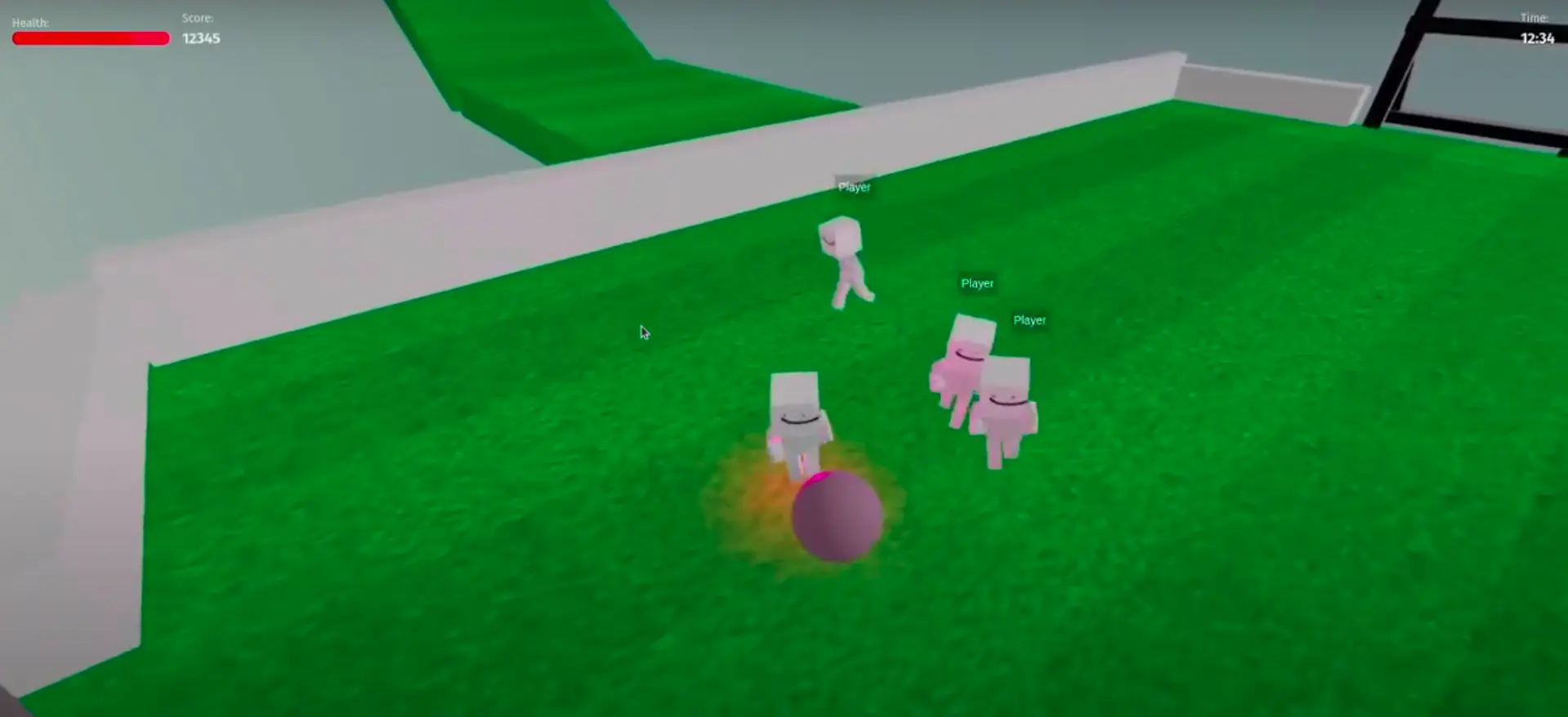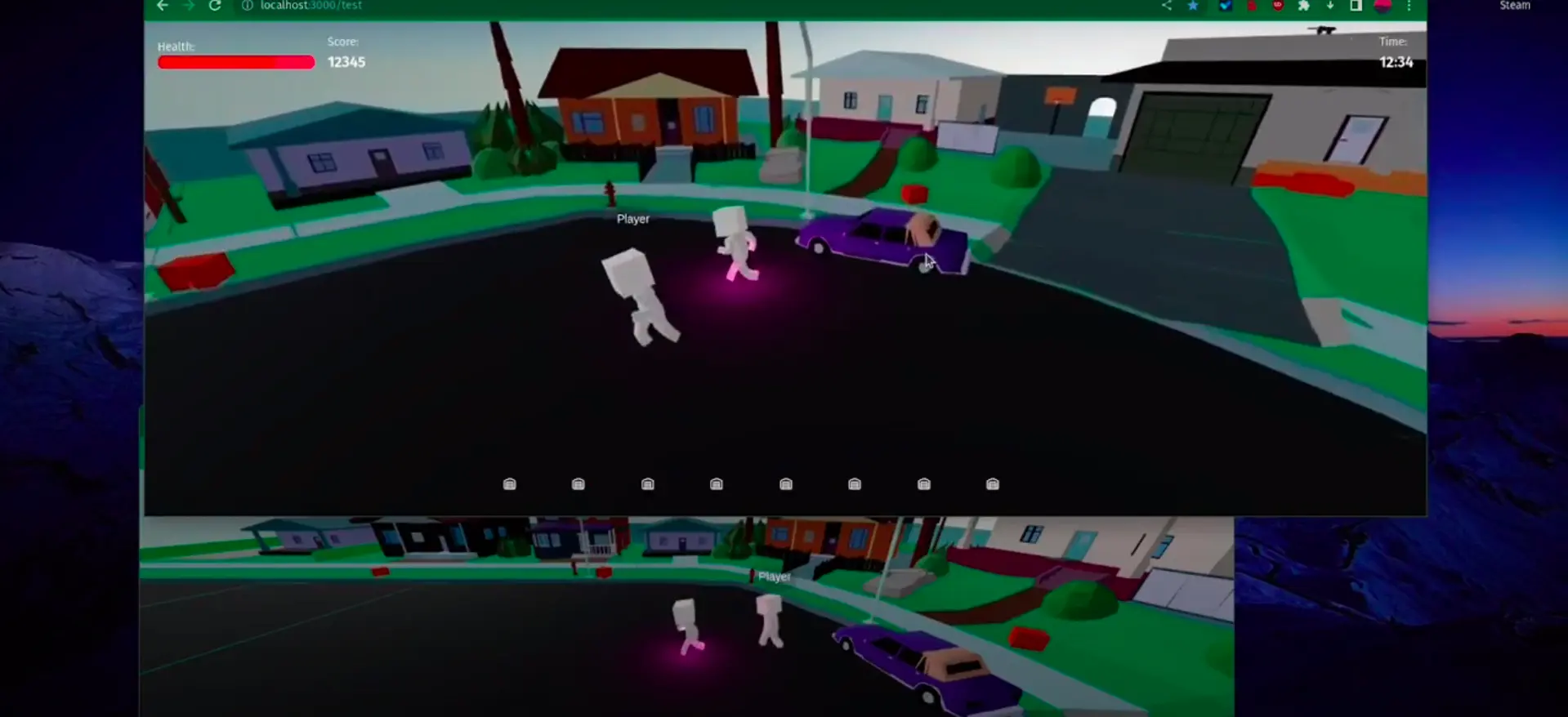- Multiplayer
- Only TypeScript
- 3D Physics (Rapier.js)
- Vanilla Three.js
- Server Authoritative
- ECS (Entity Component System) with Network Sync (NetworkComponent)
- Delta Compression
- Interpolation
- Fast to load (small assets)
- Shared code between server and client (useful for component replication)
- Trimesh Collider
Discord https://discord.gg/aEBXPtFwgU 👀
Browser games are fun, but most of them are Unity WebGL exports that take a long time to load. I wanted to create a simple multiplayer game engine using Three.js and my own ECS. This project has in mind to be a simple and fast game engine that can be used to create simple multiplayer games with the modularity of ECS.
I'm thinking about creating a GTA-like game with this engine. It would be a simple game with a city, cars, and players. The game would be server-authoritative, and the server would be able to spawn cars, NPCs, and other entities. The game would be a simple sandbox game where players can interact with each other and the environment. Inspiration : https://github.com/swift502/Sketchbook
Small demo here : https://not-roblox.vercel.app/
Hosted on an european server, there is no client side prediction, so the game may be laggy if you are far from the server.
- Z : Forward
- S : Backward
- Q : Left
- D : Right
- Space : Jump
- A : Camera Left
- E : Camera Right
Modify the back/.env file with NODE_ENV=development
cd back
npm install
npm run startModify the front/.env.local file with NEXT_PUBLIC_SERVER_URL=development
cd front
npm install
npm run dev- ZombieComponent on the back-end equipped on each player
- When assigned to a player, the player becomes a Zombie.
- Sent via the NetworkDataComponent to the players.
- Components can "sleep" to avoid being sent over the network.
- Data like ZombieComponent may be relevant only once.
- If a component sleeps, it isn't sent.
- Players need to know when a component has been removed, so a boolean or "destroyed" indicator is sent.
Link to StackExchange Question
A component is "updated" when its data has been changed (e.g., SizeComponent width += 1). A component can be "destroyed," and then it is sent.
- Front-end only receives the delta; it receives data when it has changed.
- For example, if a
ColorComponentchanges, it is sent to the player. - If there is no change, it will not be sent anymore.
- Back-end needs to pass some events; this is achieved with
EventComponentsthat are only called once and then removed from the Entity. - If a player changes its
ColorComponent, anEventColorComponentis fired, received by aColorSystemthat checks for eachEventColorComponent, applies the logic to theColorComponent, and destroys theEventColorComponent.
Other example:
EventFireComponent<- user inputEventFireSystem<- this checks for itshared/FireComponent<- contains the real data, inherited fromNetworkComponentbecause it needs to be sent to the clients back.
San Andreas Map : https://skfb.ly/oJSPS


